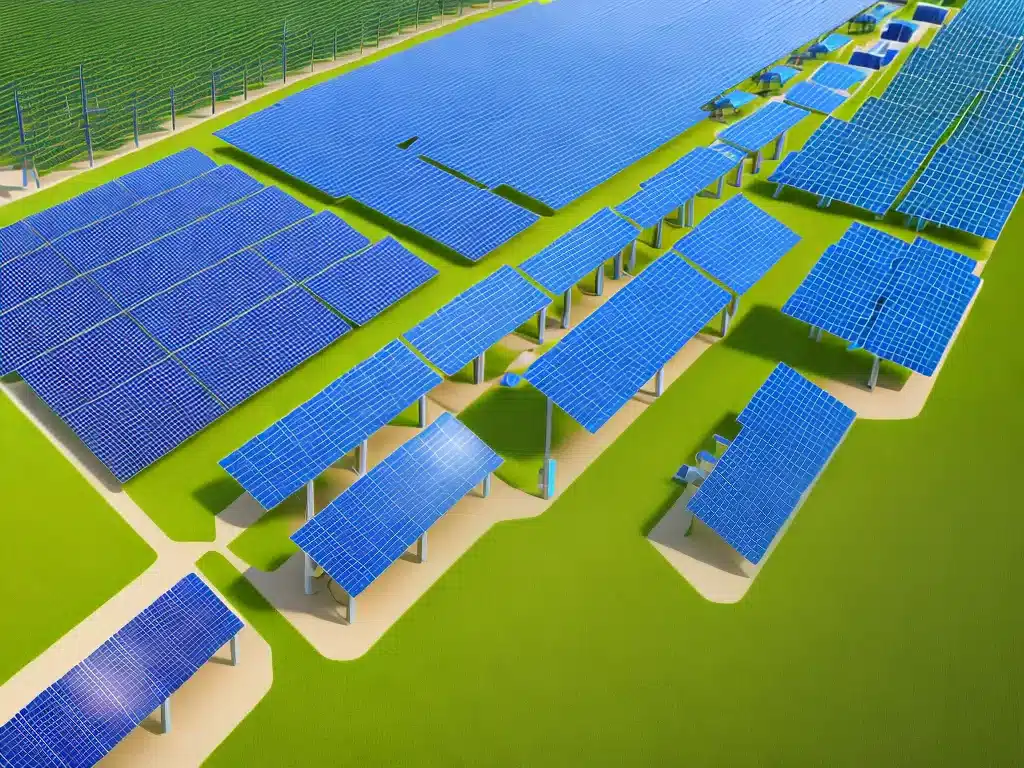
As our world faces the existential threat of climate change, developing clean energy solutions has become an urgent priority. In this article, I will explore various clean energy technologies that can help create a more sustainable future.
Renewable Energy Sources
Renewable energy comes from natural sources that are constantly replenished. Harnessing renewable energy is key to reducing greenhouse gas emissions from fossil fuels. Some major renewable energy sources include:
Solar Power
- Solar photovoltaic (PV) panels convert sunlight directly into electricity.
- Solar PV capacity has grown exponentially in the last decade, and solar now provides 3% of US electricity.
- With plummeting costs, solar energy has become cost-competitive with fossil fuels.
- Distributed rooftop solar minimizes transmission losses. Solar PV can be deployed rapidly and incrementally.
Wind Power
- Wind turbines harness the kinetic energy of wind to generate clean electricity.
- In 2020, wind power comprised 9% of US electricity generation.
- Both onshore and offshore wind farms are being built to tap this abundant renewable resource.
- Advances in turbine technology have made wind cost-competitive with natural gas and coal.
Hydropower
- Hydropower harnesses the energy of flowing water to produce electricity.
- With capacity of 80 GW, hydropower provides 7% of US electricity.
- Most hydropower projects use dams and reservoirs to control water flow.
- Run-of-river projects have less environmental impact but also less capacity.
Geothermal
- Geothermal power taps heat from under the earth’s surface to drive steam turbines.
- The US has an estimated 30 GW of geothermal potential.
- Enhanced geothermal systems can unlock more capacity.
- Geothermal provides constant reliable baseload power.
Energy Storage
A key challenge of renewable energy is variability. Energy storage technologies help overcome intermittency issues:
- Batteries store excess renewable energy for later dispatch when sun/wind is low.
- Pumped hydro facilities store energy by pumping water uphill into reservoirs.
- Compressed air storage uses excess renewable energy to compress air in caverns.
- Emerging technologies like molten salt storage also hold promise.
Widespread energy storage will help balance power grids with higher renewable penetrations.
Electric Vehicles
Transportation causes 29% of US greenhouse gas emissions. Electric vehicles (EVs) running on clean electricity can decarbonize the transport sector:
- Sales of EVs are rising exponentially as costs fall and ranges improve.
- Widespread adoption of EVs will increase electricity demand, providing an flexible load for grids.
- EVs can help integrate renewables by charging when supply is high. Vehicle-to-grid technology allows EVs to discharge power to the grid when needed.
- Electrifying public transit, railways, ports with EVs reduces diesel and natural gas consumption.
Smart Grids
To manage complex power systems with growing renewables, we need to modernize grids:
- Smart grids use sensors, automation, analytics to dynamically balance supply and demand.
- Improved forecasting helps grid operators prepare for variability in solar/wind generation.
- Smart meters enable consumers to shift load to times of high renewable generation.
- Microgrids and distributed energy resources make grids more resilient.
Smart grid technology is essential for scaling renewables while maintaining grid stability and reliability.
Conclusion
Transitioning to renewable energy is imperative to mitigate climate change and protect the planet. Solar, wind, geothermal and hydroelectric power can replace fossil fuels in electricity generation. Coupling renewable energy deployment with enabling technologies such as energy storage, electric vehicles and smart grids can lead to deep decarbonization of the energy system. With urgent action and sustained commitment, we can build an energy economy powered by clean, renewable resources.












